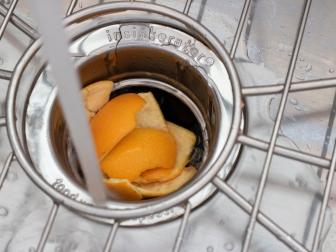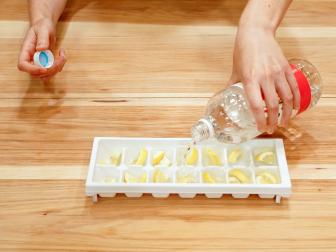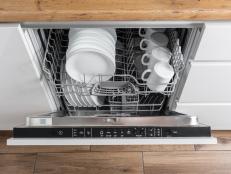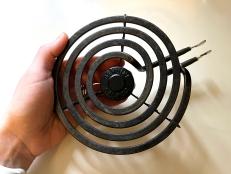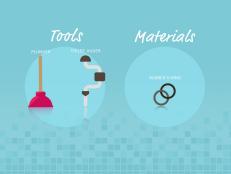Garbage Disposal Not Working? Try These Fixes
Learn how to diagnose and troubleshoot a garbage disposal that's not working and learn how to prevent issues in the future.
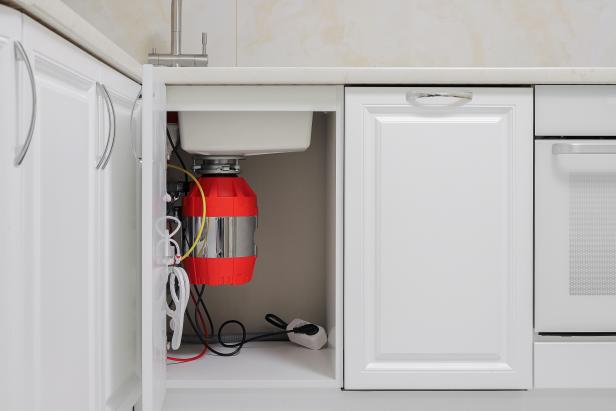
Viktor Prymachenko
DIY fixes for a garbage disposal not working could be pushing the reset button or removing clogs. Learn more about what to do when your garbage disposal suddenly stops working.

There's no denying that your kitchen garbage disposal puts up a good fight, but how can you fix it if it stops working properly? From navigating unexpected leaks to rotating the flywheel to dislodge something that unexpectedly went down the drain, there are many DIY repairs you can attempt to fix your garbage disposal when it suddenly stops working.
Most Common Reasons Your Garbage Disposal Isn't Working
- It was accidentally unplugged, or the circuit was tripped.
- The appliance needs to be reset.
- An object is jamming the flywheel or impellers.
- Damaged parts and old age.
Begin to diagnose and repair your garbage disposal following these simple tips:
- Check for power issues. Was the disposal accidentally unplugged? Is the circuit breaker tripped or fuse blown? Check the outlet under the sink and reset any tripped breakers to restore power to the unit.
- Reset the garbage disposal. There are safety features in the appliance that may cause it to stop working if it encounters an issue (such as if it is overloaded). You can find the reset button on the bottom or side of your disposal. Press the button and try to run the appliance again to see if you were able to restore power. If you were in the process of running the appliance when it stopped working, give it a few minutes to cool off before resetting.
- Check for jammed items. If there's electricity running to your disposal, but it emits an unusual hum or an alarming and unexpected grinding sound, there's likely something stuck in the blades. Unplug the appliance from the wall and use a flashlight to inspect the drain. Use needle-nose pliers to pinch and remove any visible debris.
- Manually rotate the flywheel and impellers. If you can't dislodge jammed items, you might have better success freeing items with the disposal key or an Allen wrench. With the appliance unplugged, insert the key/wrench into a hole in the very bottom center of your disposal. As you turn it, the stuck items will dislodge, making them easier to access with the pliers or more easily rinsed down the drain. Plug in the disposal and run it again.
- Check for clogs. If the disposal fails to drain, there's likely a clog in the drainpipe beyond the disposal. You should avoid using drain cleaners through your disposal; instead, disconnect the plumbing.
- Replace worn-out parts. Garbage disposals can last up to 15 years, but over time the motor, impellers, flywheel and blades can become damaged or worn out. If you've tested the above tips to no avail, consider contacting a professional for diagnostics or replace the parts you believe are broken. Keep in mind: The cost of a new disposal might be less than the cost of replacement parts and labor.
Why is the Garbage Disposal Leaking When It Runs?
It can be alarming when your appliance begins leaking, creating a potentially damaging pool of water and debris in your cabinetry. Take action at the first sign of a leak. It may be caused by:
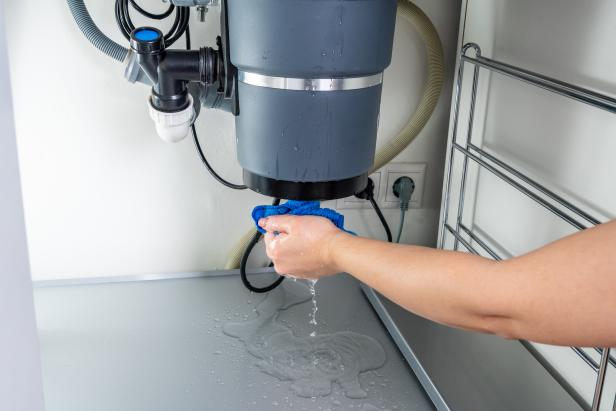
mariakray
A leaky garbage disposal can damage cabinetry.
- Worn-out or loose connections. Tighten the connections and replace any hoses, gaskets, seals or clamps that run between the disposal and the sink drain.
- Clogged drain. If there's a blockage in the drain, the garbage disposal can overflow. You may need to snake the drain or plunge the sink to flush the clog.
- Damaged appliance. Cracks in the garbage disposal due to age can be the source of leaks. Inspect the appliance and see if there is any noticeable damage.
How to Clean a Garbage Disposal
Keep your garbage disposal clean and smelling fresh with these simple steps. Plus, find tips for maintaining your disposal and the best DIY and store-bought garbage disposal cleaners.
Maintain Your Garbage Disposal with These Easy Tips
Preventing issues is the easiest way to prolong the life of your garbage disposal. These small efforts keep your appliance in great condition:

mariakray
Avoid having to fix your garbage disposal by not overloading it. Most garbage disposal can handle only one cup of scraps at a time.
- Avoid overloading. Most disposals can only accommodate about one cup of scraps at a time.
- Run the unit often. This helps prevent corrosion and rust in the system.
- Avoid grinding stringy foods. Celery, banana peels, asparagus and other fibrous foods can wrap around the blades, causing jams and unnecessary wear on the motor.
- Use cold water when flushing food scraps into the disposal. Using hot water can cause grease and oils in the food to liquefy and create blockages. (Also, you should never be pouring grease down your drain if you can help it.)
- Regularly clean the disposal. Rinse the disposal after every use and clean it weekly. Running ice cubes, orange peels and even small chicken bones can help agitate grime on the walls and around the blades.
Smelly Garbage Disposal? Try All-Natural Cleaning Cubes
All it takes is two ingredients to make this DIY cleaner.






